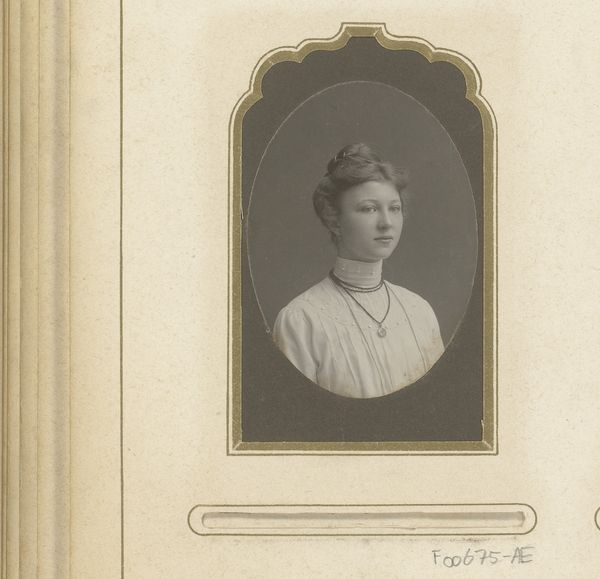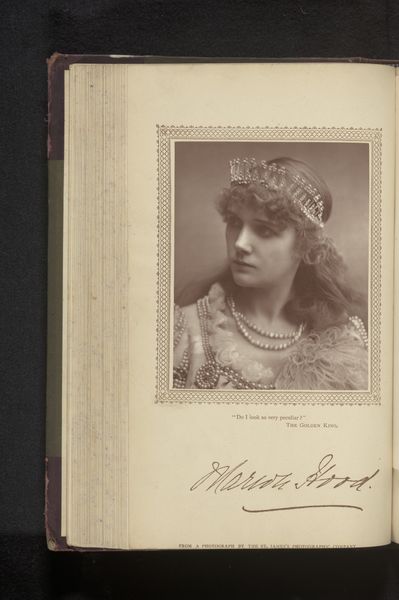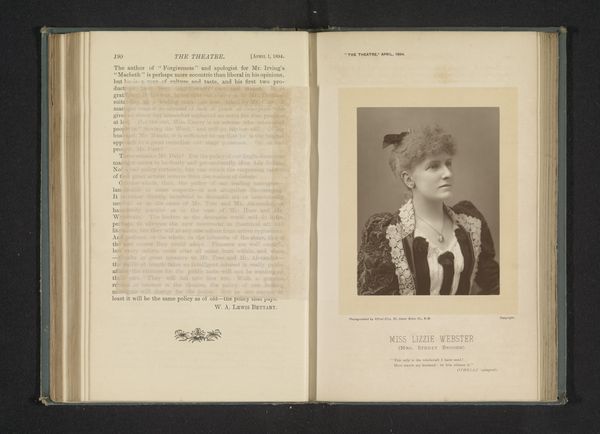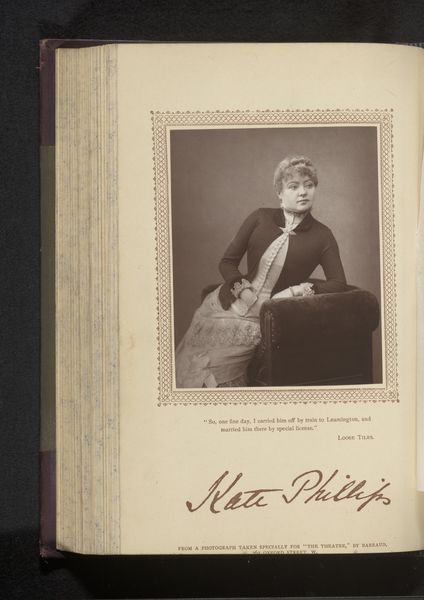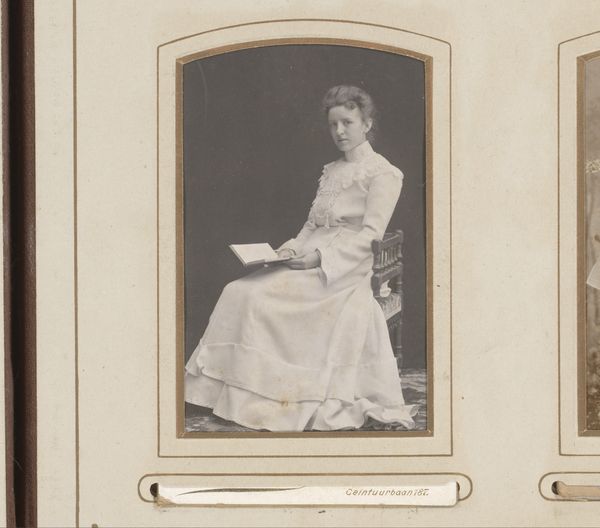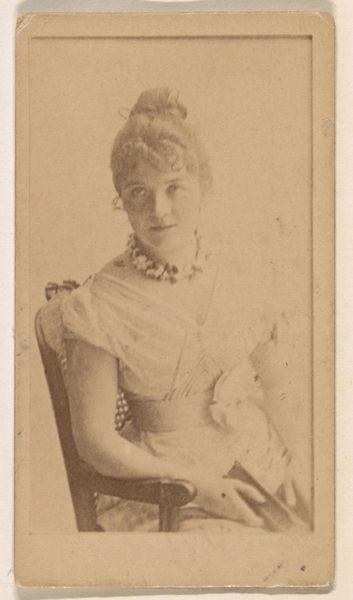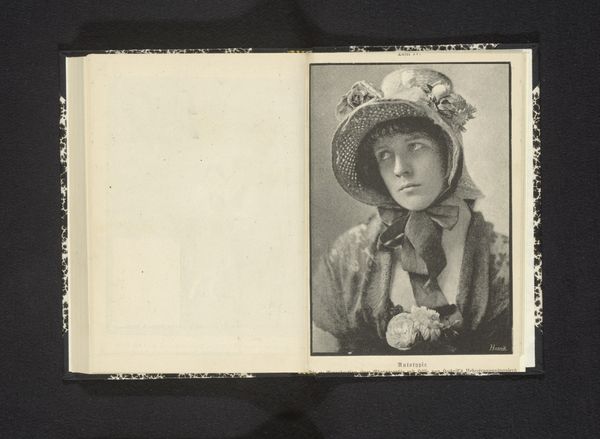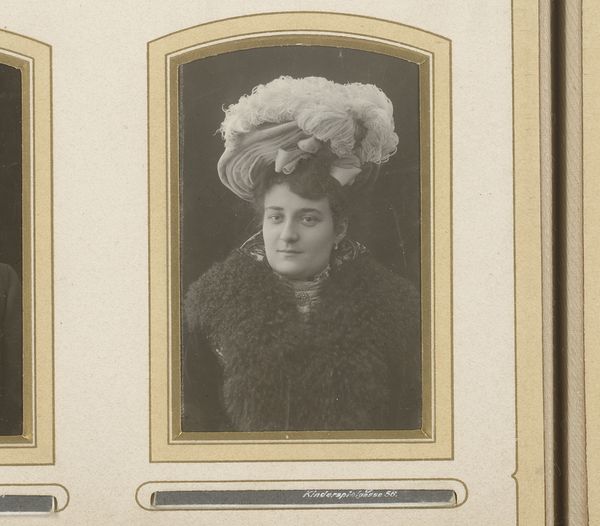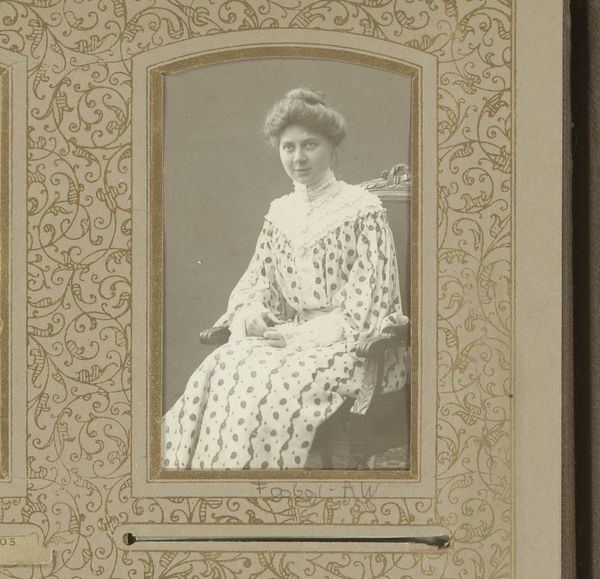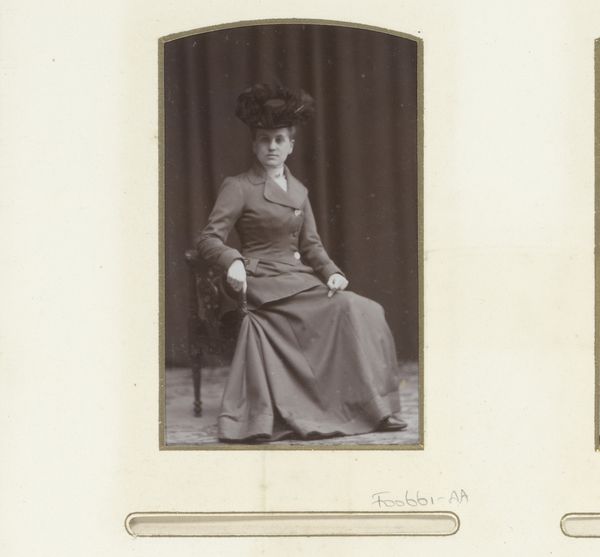
photography, albumen-print
#
portrait
#
photography
#
albumen-print
Dimensions: height 114 mm, width 92 mm
Copyright: Rijks Museum: Open Domain
Curator: What a striking portrait. This albumen print, dating to before 1885, is entitled "Portret van Laura Linden." The photographer is Herbert Rose Barraud. It's held here at the Rijksmuseum. Editor: It has a fragile, sepia-toned beauty, doesn't it? Her gaze seems averted, as if she's caught in a private moment. There is almost a wistful mood that’s projected through the image's tonality. Curator: Yes, and consider the social context of portraiture in that era. Photography was increasingly accessible, yet portraits remained a potent symbol of status, particularly for actresses, who had fought so hard for that social mobility. Editor: Definitely. She's adorned with a frilly bonnet and a delicate shawl pinned with flowers. The flower emblem could speak to Victorian ideas about beauty, love, or even the fleeting nature of life, right? Curator: Precisely! These wouldn't be casual accessories. Notice how Barraud, operating a studio in Oxford Street, understood how an actress might construct and present an image of herself to her audiences. The inscription from a Nat Lee work is intriguing as well. "Were my whole life to come one heap of troubles... And sweeten all my griefs with its remembrance." Editor: It suggests perhaps that fame, or a moment captured in time, offered respite from life's difficulties, a notion reinforced through flowers in particular— emblems for life events! This could serve a symbolic form of armor against hardships. Curator: The formal composition reinforces this controlled image. We are drawn to the image's overall romanticism, despite her, as you pointed out, distant expression, but also, perhaps because it speaks to the societal conditions that influence such portraits. Barraud crafted an item that was clearly for a public audience, and for one that could have been bought to display a support and celebration of theater. Editor: An interesting blend of revelation and restraint, ultimately. It has this beautiful duality. Curator: Exactly. And an important commentary on the way images were created for—and how they circulated through—the late Victorian world.
Comments
No comments
Be the first to comment and join the conversation on the ultimate creative platform.
